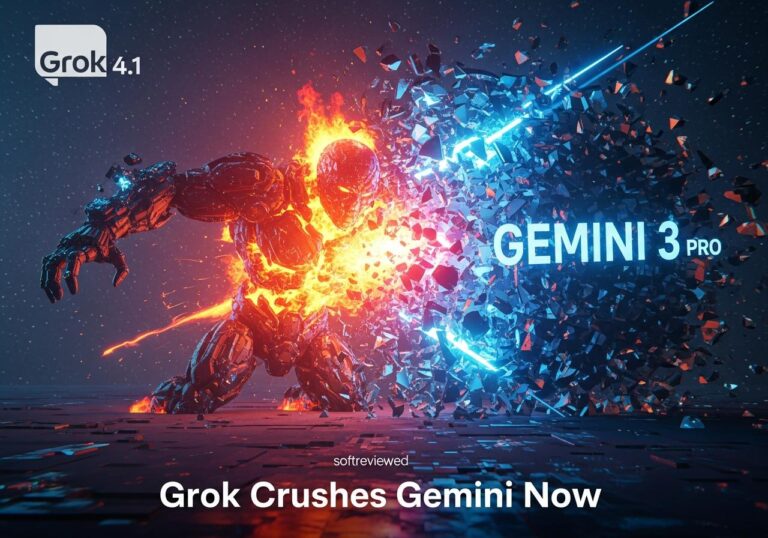GLM 4.5 Air: The Cost-Effective Coding Assistant
A budget-friendly alternative to premium AI models with impressive performance for developers
💰 Massive Cost Savings: 90% Less Than Claude Sonnet
GLM 4.5 Air costs approximately just 10% of Claude Sonnet’s pricing, making it significantly more economical for coding tasks while maintaining comparable quality.
💼 Two Affordable Pricing Tiers Available
Choose between a $3 plan with 120 prompts per 5-hour cycle or a $15 plan for more intensive usage, both designed exclusively for Claude Code integration.
🚀 Competitive Performance for Coding Tasks
Users consistently report finding “no difference” between GLM 4.5 and Claude Sonnet for daily coding work, with GLM maintaining reliable performance even at high context usage levels.
⚔️ Direct Competitor to Premium AI Plans
GLM coding plan positions itself as a direct alternative to Claude Pro/Max plans and OpenAI’s Plus/Pro subscriptions, offering similar functionality at a fraction of the cost.
🧠 Better Context Management Under Pressure
GLM maintains task focus and performance even when context usage reaches 80-90%, unlike Claude Sonnet which becomes “painful to work with” beyond 80% context utilization.
👨💻 Proven Viability for Budget-Conscious Developers
Developers who “already know enough programming to work around any issues” find GLM models “quite usable” as cost-effective alternatives for daily development tasks.
The Game-Changing Price War That’s Transforming AI Coding
If you’re spending ₹1,670-16,700 ($20-200) monthly on Claude Code, prepare for a reality check. GLM-4.5 has entered the coding assistant arena with pricing that starts at just ₹250 ($3) per month, offering comparable performance to models costing 6x more. This isn’t just about saving money—it’s about democratizing access to enterprise-level AI coding tools.
Both platforms promise to transform your development workflow, but they take radically different approaches to pricing, integration, and capabilities. Understanding these differences could save you thousands of rupees annually while potentially improving your coding productivity.
What Makes GLM-4.5 the Open-Source Powerhouse
GLM-4.5 represents a breakthrough in open-source AI development. Built by Z.ai with 355 billion total parameters and 32 billion active parameters using Mixture of Experts (MoE) architecture, it’s designed specifically for reasoning, coding, and agentic tasks.
The model operates in two distinct modes: “thinking mode” for complex reasoning and tool usage, and “non-thinking mode” for instant responses. This hybrid approach ensures optimal performance whether you’re debugging intricate logic or need quick code suggestions.
Key technical specifications include:
📌 Architecture: 355B total/32B active parameters with MoE design
📌 Context Length: 128,000 tokens for handling large codebases
📌 Training Data: 22T tokens including 7T dedicated to code and reasoning
📌 Tool Integration: Native support for Claude Code, Roo Code, and CodeGeex
📌 Open Source: MIT license with weights available on HuggingFace and ModelScope
What sets GLM-4.5 apart is its exceptional tool-calling success rate of 90.6%—the highest among tested models, even outperforming Claude Sonnet 4 at 89.5%. This translates to more reliable code generation and fewer failed attempts when working on complex projects.
Claude Code: The Premium Terminal-Native Solution
Claude Code embeds Claude Opus 4.1 directly in your terminal, offering deep codebase awareness and the ability to edit files and run commands in your development environment. It’s built for developers who want seamless IDE integration without context switching.
The platform excels at agentic search, understanding entire codebases without manual context selection, and making coordinated changes across multiple files. Its strength lies in its mature ecosystem integration with VS Code, JetBrains IDEs, and comprehensive project management tools.
Claude Code’s standout features:
✅ Native IDE Integration: Direct VS Code and JetBrains support
✅ Agentic Search: Automatic codebase mapping and understanding
✅ Multi-file Editing: Coordinated changes across project files
✅ Context Management: Up to 1M tokens with hierarchical organization
✅ Enterprise Security: Advanced user management and audit logs
However, this premium experience comes with premium pricing that can quickly escalate for individual developers and small teams.
The Price Battle: David vs Goliath Economics

The pricing difference between these platforms is staggering. GLM Coding Plan offers two tiers specifically designed for developers:
GLM Coding Lite (₹250/$3/month):
- 120 prompts per 5-hour cycle
- Access to GLM-4.5 flagship model
- Claude Code integration only
- Perfect for solo developers and freelancers
GLM Coding Pro (₹1,250/$15/month):
- 600 prompts per 5-hour cycle
- Same GLM-4.5 access
- Ideal for professional high-volume development
Compare this to Claude Code’s subscription tiers:
Claude Pro (₹1,670/$20/month):
- ~45 messages every 5 hours
- Claude Sonnet 4 access
- Basic terminal integration
Claude Max 5x (₹8,350/$100/month):
- 5x Pro usage limits
- Access to Claude Opus 4.1
- Enhanced features
Claude Max 20x (₹16,700/$200/month):
- 20x Pro usage limits
- Maximum Opus access
- Priority support
The value proposition becomes clear when you consider that GLM’s $3 plan offers 120 prompts versus Claude Pro’s ~45 messages at nearly 7x the cost. For Indian developers, this represents savings of up to ₹16,450 ($197) monthly.
Performance Benchmarks: Where Each Platform Shines
Recent comprehensive benchmarking reveals fascinating performance dynamics between these platforms. GLM-4.5 ranks 3rd overall across 12 industry-standard benchmarks, trailing only OpenAI’s o3 and Grok-4, while outperforming Claude Opus 4 in several key areas.
GLM-4.5 Benchmark Results:
- SWE-bench Verified: 64.2% (vs Claude Sonnet 4: 70.4%)
- Terminal-Bench: 37.5% (vs Claude Opus 4: 43.2%)
- Tool Calling Success: 90.6% (vs Claude Sonnet 4: 89.5%)
- MATH 500: 98.2% (matches Claude Opus 4)
- AIME24: 91.0% (vs Claude Opus 4: 75.7%)
While Claude Code leads in some traditional coding benchmarks, GLM-4.5 excels in agentic tasks and tool integration—crucial for modern development workflows that involve multiple tools and complex automation.
Real-World Development Experience
In practical coding scenarios, both platforms demonstrate distinct strengths. GLM-4.5 shines in full-stack development, creating sophisticated standalone artifacts from interactive games to physics simulations. Its ability to generate complete applications through natural language interaction makes it particularly valuable for rapid prototyping.
Recent user testing across 52 diverse coding tasks revealed GLM-4.5 achieving an 80.8% win rate against Qwen3-Coder and 53.9% against Kimi K2. While it shows competitive performance against Claude Sonnet 4, the cost-benefit ratio heavily favors GLM-4.5 for most development scenarios.
Claude Code maintains advantages in enterprise environments requiring extensive IDE integration, complex project management, and team collaboration features. Its mature ecosystem and enterprise-grade security make it suitable for large organizations despite higher costs.
Integration and Setup: Getting Started
Setting up GLM-4.5 with Claude Code requires minimal configuration:







